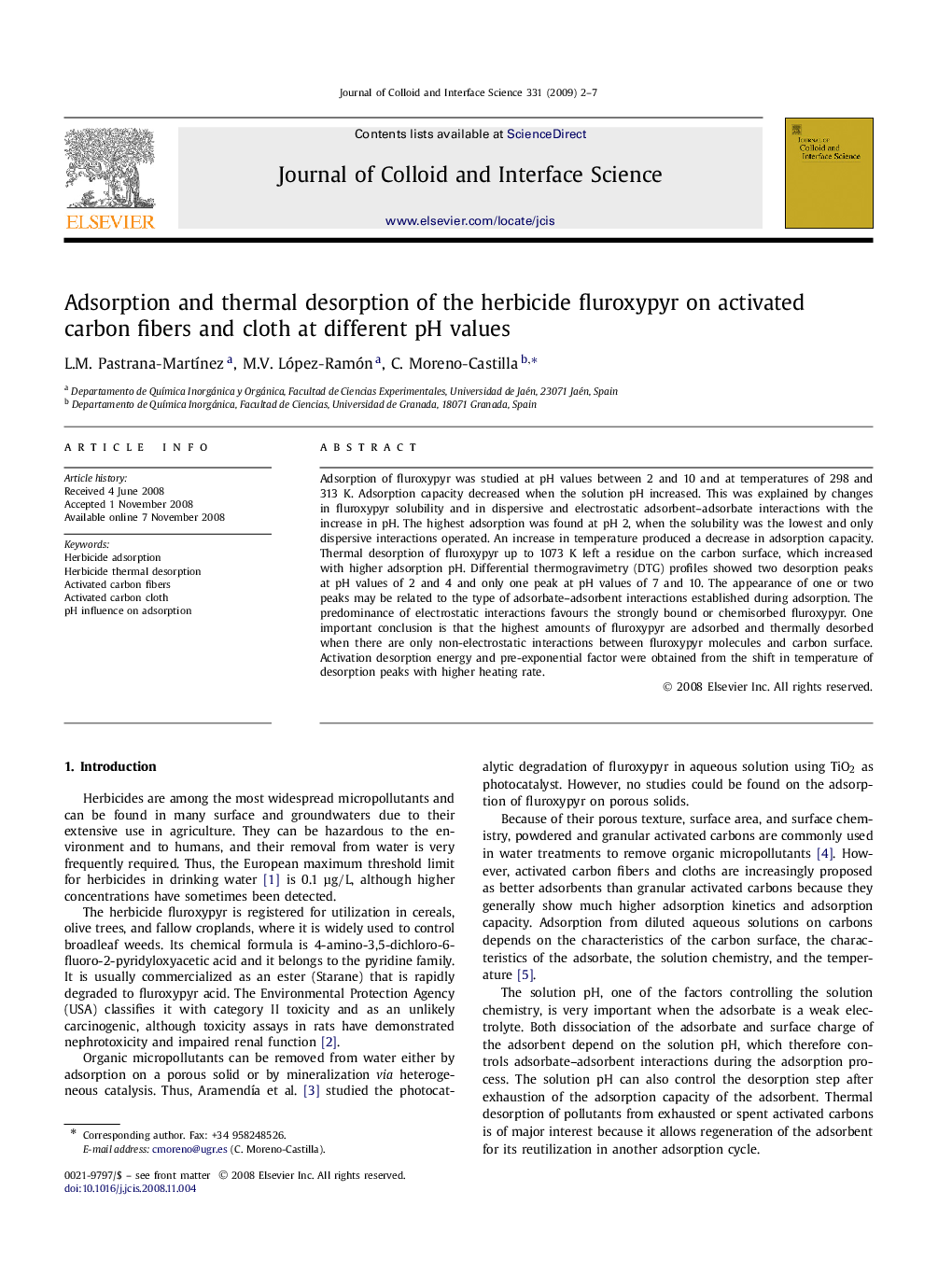| Article ID | Journal | Published Year | Pages | File Type |
|---|---|---|---|---|
| 611119 | Journal of Colloid and Interface Science | 2009 | 6 Pages |
Adsorption of fluroxypyr was studied at pH values between 2 and 10 and at temperatures of 298 and 313 K. Adsorption capacity decreased when the solution pH increased. This was explained by changes in fluroxypyr solubility and in dispersive and electrostatic adsorbent–adsorbate interactions with the increase in pH. The highest adsorption was found at pH 2, when the solubility was the lowest and only dispersive interactions operated. An increase in temperature produced a decrease in adsorption capacity. Thermal desorption of fluroxypyr up to 1073 K left a residue on the carbon surface, which increased with higher adsorption pH. Differential thermogravimetry (DTG) profiles showed two desorption peaks at pH values of 2 and 4 and only one peak at pH values of 7 and 10. The appearance of one or two peaks may be related to the type of adsorbate–adsorbent interactions established during adsorption. The predominance of electrostatic interactions favours the strongly bound or chemisorbed fluroxypyr. One important conclusion is that the highest amounts of fluroxypyr are adsorbed and thermally desorbed when there are only non-electrostatic interactions between fluroxypyr molecules and carbon surface. Activation desorption energy and pre-exponential factor were obtained from the shift in temperature of desorption peaks with higher heating rate.
Graphical abstractThermal desorption of fluroxypyr after its adsorption on the activated carbon cloth at different pH values.Figure optionsDownload full-size imageDownload as PowerPoint slide
